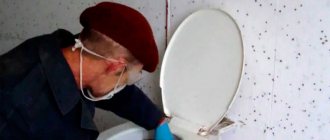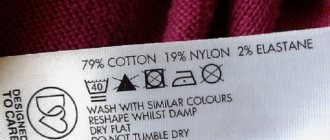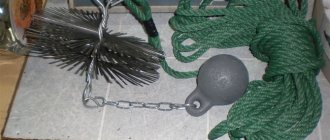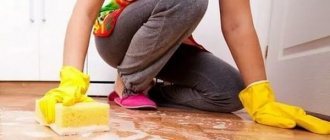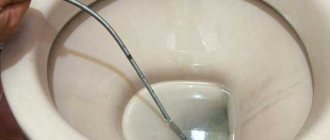If a stove or fireplace is properly built and properly operated, it can last for decades without creating problems or raising concerns about the safety of its use. To do this, it is necessary to follow certain rules, which include regular and timely cleaning of the chimney from combustion products accumulated in it and debris from outside. This work can be entrusted to specially trained people and service organizations, but they are not always available, so it is important to know how to do it yourself if necessary.
You can clean the pipe yourself Source hozsoveti.ru
When and why to clean the chimney
Chimneys of stoves and fireplaces operating on solid or liquid fuel need regular cleaning. When it burns, ash is formed, which remains in the firebox, as well as soot, which settles on the inner surface of the chimney. Its quantity depends on the type of firewood, combustion temperature, frequency of use of the heating device and other parameters.
But while it’s easy to control the condition of the firebox, you can only find out what’s going on in the chimney after an inspection. If the stove is in constant use, then such an inspection must be carried out at least twice a year - before the start of the heating season (at the end of summer) and after its completion (in the spring).
Based on the results, a decision is made on how to clean the chimney - radically, using mechanical means, or you can do it in less labor-intensive ways. This depends on the thickness of the soot on the walls and the presence of foreign objects in the channel, such as dry leaves, bird nests and other debris. If they are present, and the plaque has grown by more than 2-3 mm, a major cleaning is needed.
Smoke channel overgrown with soot Source legkovmeste.ru
If this is not done, the following unpleasant consequences are possible:
Overgrown with soot, the lumen of the chimney narrows, and smoke can no longer freely escape through it, so part of it lingers in the firebox, penetrating into the room and worsening combustion. This is also facilitated by poor heating of the chimney walls, which reduces draft;
- carbon monoxide entering a room often causes severe poisoning with a sad outcome;
- a thick layer of soot in the pipe can ignite, and hot sparks flying out of it can cause a fire;
- the penetration of smoke into the house, even without serious consequences, is an unpleasant odor and soot on all surfaces.
Traces of soot on the outer surface of the stove indicate poor draft Source i.ytimg.com
Alder
- The top of the chimney head is removed for an initial general inspection of the condition of the pipe walls.
- Accumulations of soot are removed from the area where the cap is attached to the pipe. To do this, a scraper is used, which cleans the pipe to the depth of an outstretched arm.
- The ruff is tied to a rope or cable, and a weight is fixed just below it. This device is carefully lowered into the pipe. You cannot throw the load, as this will lead to severe mechanical damage.
- Pushing the weights and brush is done with gentle up and down movements along the entire length of the pipe.
- The pipe turns are equipped with special hatches through which cleaning can be done.
- A brush equipped with a long handle will help clean the chimney from the firebox side. They also use a flexible cable, at one end of which a brush is installed, and the other end is fixed in the head of the electric drill. This technique mechanizes and simplifies the process of soot removal.
- The final stage is cleaning the firebox and ash compartment.
Before burning it, it is recommended to check the pipe for debris and foreign objects such as bird nests and branches. The briquette is placed without removing it from the packaging on the coals that have not had time to cool.
Cleaning Methods
In addition to the traditional mechanical method used by chimney sweeps, there are others used to prevent the rapid overgrowing of the lumen with soot and to remove small deposits of it. Among them there are both folk and modern ones.
Preventive methods
First, about how to clean a chimney in a bathhouse from soot using folk remedies that are always at hand. They can be used on the eve of mechanical cleaning to destroy and weaken the structure of deposits:
- Soda, salt, starch. These powders in amounts from 500 g to a kilogram are poured into the furnace firebox when the firewood is well lit and the chimney is warmed up. It is best to do this after the second bookmark.
- Potato skins, chopped small potatoes, or corn cobs . These products also contain starch, when burned, the soot softens and pulls away from the walls. But you will need a lot of them - about a bucket. In villages, cleaning the chimney from soot often begins after harvesting, when it is necessary to dispose of small and spoiled potatoes.
Potato peeling is a proven folk method for removing soot Source pp.userapi.com
Advice! You can try to remove mild deposits in metal pipes that have not yet had time to compress by gently tapping them with a hammer and cleaning the firebox from any soot that has fallen into it.
- Firewood from aspen or alder. They have a very high combustion temperature and simply burn off the soot. But they must be used carefully, since when burning large armfuls, the flame can escape from the pipe, especially if it is not high and does not have elbows. Sauna stoves are usually equipped with such chimneys. It is better to use this method for prevention, burning several logs once a week or a month, depending on the frequency of use of the fireplace.
Burning soot increases the risk of fire Source sovet-ingenera.com
See also: Catalog of house projects with a fireplace or stove
A more effective way to clean a chimney in a bathhouse or in a house is to use special chemical catalysts. These modern products are available in different forms: liquids, granules, powders, briquettes and logs. During the combustion process, volatile substances are released from them, destroying the structure of the soot, which are carried into the pipe by a stream of hot gases. They are not dangerous for humans.
Among the most popular means are:
- logs “Chimney Sweeper”, “Sazhotrus”, “Polishko” and other bars and briquettes made of compressed wood fibers impregnated with chemicals. To prevent soot deposits in chimneys, they are burned in the firebox along with firewood or other fuel at a certain frequency specified in the instructions. As a rule, for daily heating hearths, one log every 3-5 weeks is enough, and for sauna stoves that are used no more than twice a week, one log every 5-6 months.
Such a log is burned along with the paper wrapper Source obsi.ru
- powder and granular products “Komichek”, “Sadpal”, “GLAS-Smoke”, “Happy Summer Resident”, PKH, etc. They are poured into the firebox on burning wood; for ease of use, the powders are usually dosed and placed in single-use bags. The substances they contain cause a catalytic reaction, as a result of which the soot burns without the formation of fire.
In addition to those listed, there are many other similar chemical agents that can solve the problem of how to clean soot from a chimney pipe. And most of them have a prolonged effect: the substances released during combustion continue to act on creosote deposits for 10-15 days during each fire. The soot peeled off from the walls falls down or is carried out with smoke.
But before purchasing, you must definitely clarify what type of heating devices they are intended for, since in addition to universal ones, there are products intended only for wood-burning stoves or only for pellet boilers.
How to clean soot from walls, windows and ceilings
1. So, first you need to collect soot from the walls and ceiling with a vacuum cleaner, then sweep away the remains with a broom, making straight, sharp movements. Try to act in such a way as not to rub the soot and soot, and not to drive it deeper.
Cover the floor with newspaper or plastic wrap first to prevent dirt from falling onto it from the ceiling.
2. When cleaning with a broom is completed, it is convenient to use special chemical sponges. They can be purchased at hardware stores. These sponges are impregnated with a special chemical composition to remove soot and soot.
It is better to purchase sponges in large quantities at once, since they usually get dirty quickly. When working with sponges, again, try not to rub the soot into the walls and ceiling, but sweep it away. Do not wet the sponge; it must be dry.
A little trick: when the sponge becomes dirty, cut off the top layer and continue working.
3. And now you can move on to wet cleaning. At this stage it is necessary to degrease and completely clean the surface. Degreasers and detergents will do an excellent job of this.
Soak a rag in hot water, apply detergent (such as dishwashing liquid) to it, then add toilet bowl cleaner on top. Soot should also be washed off using sweeping movements, acting very carefully. Rinse the cloth regularly in clean water and change it as often as possible. To finish the job, use a brush effectively
The final touch: rinse the solution from the surface with warm water and wipe dry. If you cannot remove the soot, repeat the procedure
Rinse the cloth regularly in clean water and change it as often as possible. To finish the job, use a brush effectively. The final touch: rinse the solution from the surface with warm water and wipe dry. If you cannot remove the soot, repeat the procedure.
Various types of degreasers will help remove soot from a whitewashed ceiling. Use technical or medical alcohol. Alcohol will degrease the surface if the ceiling is painted with water-based paint. But, most likely, the ceiling will have to be whitewashed again.
You can remove soot from plastic or laminate by moistening a sponge with gasoline, thinner, or industrial alcohol. After this, use degreasing detergents.
Soot is easily washed off glass with paper crumpled up and soaked in water, cloth rags - using floor or dishwashing detergent.
In order to wash soot from wood or metal, village people often use river sand or grated brick. You can also try to clean the wooden surface with a scraper or sander.
Soot stains can be easily removed if you sprinkle them generously with salt and leave them like that for a day.
Today there is a wide selection of different chemicals that can be used to remove soot from any surface. These are concentrated products based on alkaline composites and organic detergent additives. These products allow you to effectively wash off soot without exerting significant physical effort and with minimal time.
Video description
The effectiveness of chemical cleaning agents is quite high. You can verify this by watching the video:
It is important! Do not try to get rid of deposits in the chimney using firecrackers or medicinal ampoules, which explode in the firebox when exposed to fire. This is dangerous and can simply destroy the oven.
Mechanical method
Cleaning a chimney in a private house should be carried out in calm and dry weather in order to minimize the risk of falling from the roof and make your work easier. But even under these conditions, the use of insurance in the form of a rope attached to a belt and a ridge or other durable roof element is mandatory.
The main tool of a chimney sweep is a brush with stiff bristles, which is used to scrape off plaque from the inner walls of the smoke channel. It is important to understand that such plaque deposits more actively on rough surfaces, protrusions and even scratches. And if it is difficult to damage a brick channel with a metal brush, then it is better to use plastic bristles for cleaning metal pipes and sandwiches.
Brush with nylon bristles Source media2.24aul.ru
See also: Catalog of companies that specialize in the sale and service of stoves and fireplaces
Its diameter should be slightly larger than the internal diameter of the pipe. In the case of a square and rectangular chimney, you will need another small brush to clean corners that are inaccessible to the main tool.
In addition to these, you may need:
- scraper for removing solid coked deposits;
- core for weighting the brush or breaking through debris jams with a diameter of about 2/3 of the internal cross-section of the chimney. At the end of the brush there should be a loop for attaching the core;
- rope or wire to which the tool will be tied. Furnace service organizations use more modern and convenient flexible telescopic holders.
Stores sell ready-made sets of various configurations, including those with flexible holders Source static-eu.insales.ru
Not wanting to spend money on a rarely used tool, some homeowners use homemade devices, making a brush from pine or juniper branches and tying a water-filled brush to it plastic bottle. Another option is a one and a half liter plastic bottle, the walls of which are cut into strips of 1.5-2 cm. Then a wire is passed through its bottom and neck and attracted to each other, while the strips fold, forming rigid loops in a circle, which allow for fairly high-quality cleaning chimney.
Note! Using weights, dumbbells, hammers and other heavy objects instead of a round core can cause an irregularly shaped load with a displaced center of gravity to get stuck in the pipe.
Before starting work, close all openings in the room through which soot can fly out: cleaning doors, firebox door. The open hearth is covered with film, gluing it around the perimeter with tape.
First, the fireplace is cleared of ash and a container is placed inside for falling soot Source pechiexpert.ru
Features of biological treatment
Some homeowners are wondering how to clean a stove in their country house that smokes and smokes. There are mechanical, chemical and biological (also called folk) cleaning agents. The big advantage of biological cleaning is that it can be used in any weather.
There are three main and common methods of biological treatment: burning special means and products, using certain firewood as fuel, and sprinkling with salt.
Video description
How vacuum cleaning of chimneys takes place is shown in the video:
Having finished the main work, remove the remaining soot in the cleaning holes using small scoops and brushes, and clean the firebox with the ashpit again. You can also use an old household or construction vacuum cleaner to prevent small particles of dirt from flying around the house.
Since it is very difficult to blindly clean a pipe in a bathhouse or residential building, it is advisable to check the quality of the work using mirrors tied to a cable. With a long chimney, this trick will not work due to the lack of light inside, but portable endoscope video cameras with a long cord that connect to a smartphone or other device via a USB portal can come to the rescue. Professionals have special equipment for quality control.
A household USB endoscope allows you to look into the most inaccessible places Source vupe.ru
How to clean the inside?
Many people are interested in knowing how to clean a stove pipe when it is not possible to get to it on the roof. Suitable for cleaning the inside of a house or bathhouse. For this purpose, devices have been developed - brushes on flexible rods. You can also buy them in construction markets.
Experts sometimes use a vacuum cleaner to clean the stove. It is better not to try this on your own: standard home vacuum cleaners will not help here. They have little traction and, in addition, soot in them can cause an electrical appliance to catch fire.
Getting to the chimney to clean the fireplace portal without disassembling it is quite simple. When cleaning a stove or boiler is required, you must first remove the glass collecting condensate from the pipe. Through this hole you can insert a brush into the pipeline and clean it by moving it back and forth. Soot and dirt will fly down and be ventilated out through the hole in the pipeline. The work is dusty, so you should wear a protective mask, respirator, suit and gloves when cleaning.
On a note!
When there are no condenser cups or service hatches, you can do without disassembling the smoke exhaust system. You can clean it using traditional methods.
Tips for using stoves
To avoid having to constantly think about how to clean soot from a chimney in a bathhouse or restore draft in a fireplace, you need to prevent the chimney from quickly becoming overgrown with combustion products. This is easy to achieve if you follow a few simple rules for operating stoves:
- Do not use coniferous wood for heating on a regular basis. Soot, as well as debris and dust entering it from the street, quickly adhere to the resinous substances deposited on the walls of the pipe. It is very difficult to clean them.
- Popular birch firewood is also not the best option, since it contains tar, which has similar properties.
- Fuel pellets, briquettes and granules made from sunflower husks or pine and spruce sawdust also quickly clog the chimney.
Pellets are a very economical fuel, but you need to pay attention to their composition Source nencom.com
Safety precautions
How to clean soot from a stove while observing safety rules and conditions? Soot in the air has a very bad effect on the lungs, so when working with the stove and pipes, you must use protective equipment: gloves, goggles, and a nose bandage.
If you plan to perform mechanical cleaning on the roof, be sure to wear thick, stable shoes with solid soles. You cannot clean the roof in bad weather: rain, snow, wind.
After the cleaning is completed, the fallen soot must be removed: manually or using a vacuum cleaner. After treatment with chemicals, the room must be thoroughly ventilated.
Special powders
- A round brush is inserted through the hole in the chimney tee on a flexible handle. The attachment is connected to an electric drill. The dirt is cleared as the brush rotates. To clean the entire height of the pipe, you will have to add a handle along the length.
- Old stubborn stains can be removed using a blowtorch. The chimney will have to be disassembled. Each part must be burned with fire. Operating temperature - 800-900 degrees.
- When the cleaning is completed, it is recommended to insulate the pipe riser to get rid of the dew point.
An old method that is still used today. Manual cleaning is carried out at the beginning of the heating season and at its end. But this is not always enough.
Folk remedies Recipes for masks At home Hair loss in women How to stimulate growth Causes of hair loss Hair loss in men Review of vitamins Helpful tips
Using powder products
Powder cleaner is used to burn soot formed on the walls of the furnace or furnace. Usually they are burned with wood when heating the stove, this will help prevent the appearance of soot and tar deposits.
- Naphthalene. It is added when the wood has already burned out. It evaporates, and its vapor softens the soot deposit. The obvious disadvantage of this method is the unpleasant smell. Therefore, it should not be used to clean stoves and fireplaces with an open source of fire.
- "Kominichek." Chimney duct cleaner in powder form, 5 sachets of 15 grams in one package. It is recommended to use with a creosote layer thickness of no more than 2 mm. The sachet is placed on smoldering coals and the copper chloride contained in the product loosens the soot layer.
- Blue mixture: copper sulfate - 5 parts;
- saltpeter - 7 parts;
- coal or coke powder - 2 parts.
It is poured onto smoldering coals, and as it evaporates, it softens the soot and it falls off.
How to clean a chimney pipe with your own hands: equipment, steps
You can make simple cleaning equipment yourself. This will require a little time and imagination.
Homemade devices
A popular option for mechanical cleaning is a brush made from plastic eggplants, water bottles, and drinks.
- The label is removed from the container.
- Bottles are cut into strips 1.5-2 cm wide. This needs to be done lengthwise.
- Holes are melted at the bottom of the container with a hot nail so that the wire can pass through. A 5 mm wire is threaded.
- The bottles are inserted into each other through strips and secured with wire.
- The strips are straightened to form a circle.
- All this is attached with a cable or strong rope.
It is important to ensure that the homemade plastic brush and weight go down the center of the chimney and do not twist to the side.
A more reliable alternative is a disc grinder brush. It is durable and suitable for repeated cleaning.
When choosing, it is recommended to take into account that the nozzle and the chimney must match in diameter, since the brush bends poorly.
A 5 kg weight and a rope are attached to the brush. The dimensions of the load are selected so that it is ⅓ smaller than the chimney. For reliability, it is recommended to stretch another rope to the very bottom of the pipe, in case the brush gets stuck. Then you can pull down.
Cleaning steps
- Brush for cleaning the lumen of the pipe. Take plastic or metal. The size is taken slightly larger than the diameter of the chimney so that the brush does not slide along the walls, but passes well along them.
- Flexible telescopic handle (extends to add length), similar in appearance to a plumber's handle. Strong rope, cable.
- A brush with stiff bristles and a long handle.
- Metal weight in the form of a ball.
- Scraper to remove soot stains.
- Check and close the firebox door tightly.
- Climb onto the roof and remove the damper from the chimney.
- Gradually lower the brush with the weight into the pipe until the end. The length of the brush handle can be increased as needed.
- Then raise the brush up and lower it again.
- Repeat several times.
- After this, remove the soot indoors from the firebox.
You can get rid of soot in the chimney on your own if you adhere to basic fire safety rules. The best effect can be achieved by combining several chimney cleaning methods.
Mechanical
- One of the most well-known preventive methods, used very often, is to sprinkle firewood with salt while the hearth is burning. But this method is only good as a preventive measure and will not help get rid of serious problems.
- A well-known method among stove makers to directly remove plaque is to burn potato peelings. They perfectly help rid the chimney of soot build-up.
A more reliable alternative is a disc grinder brush. It is durable and suitable for repeated cleaning.
